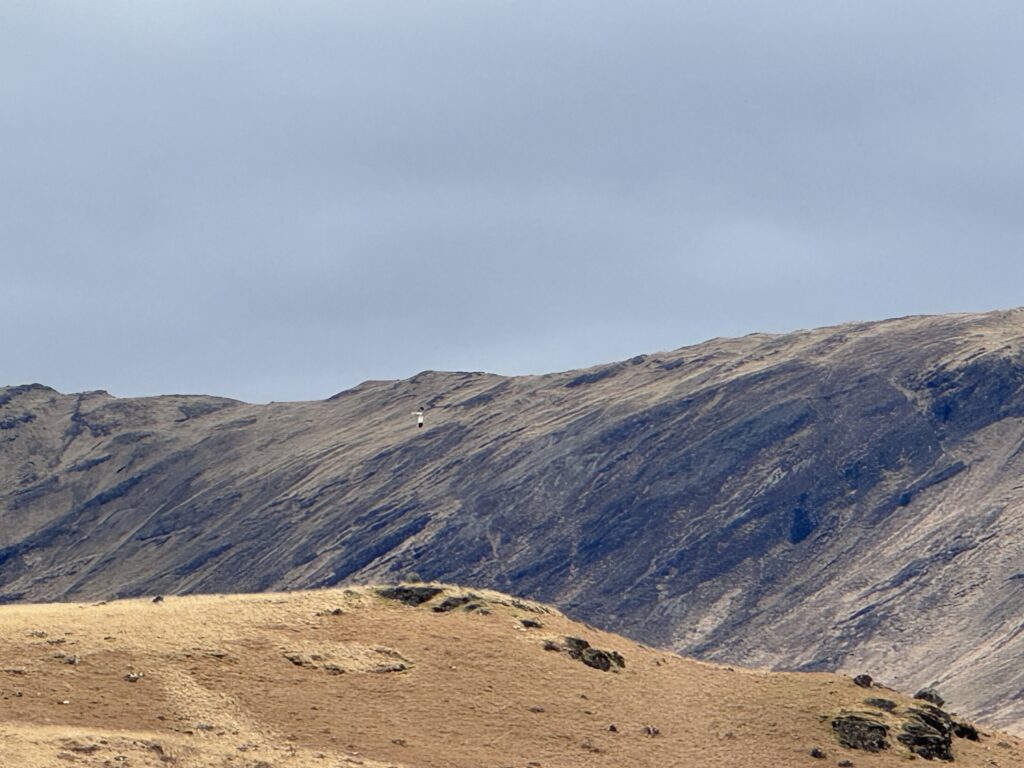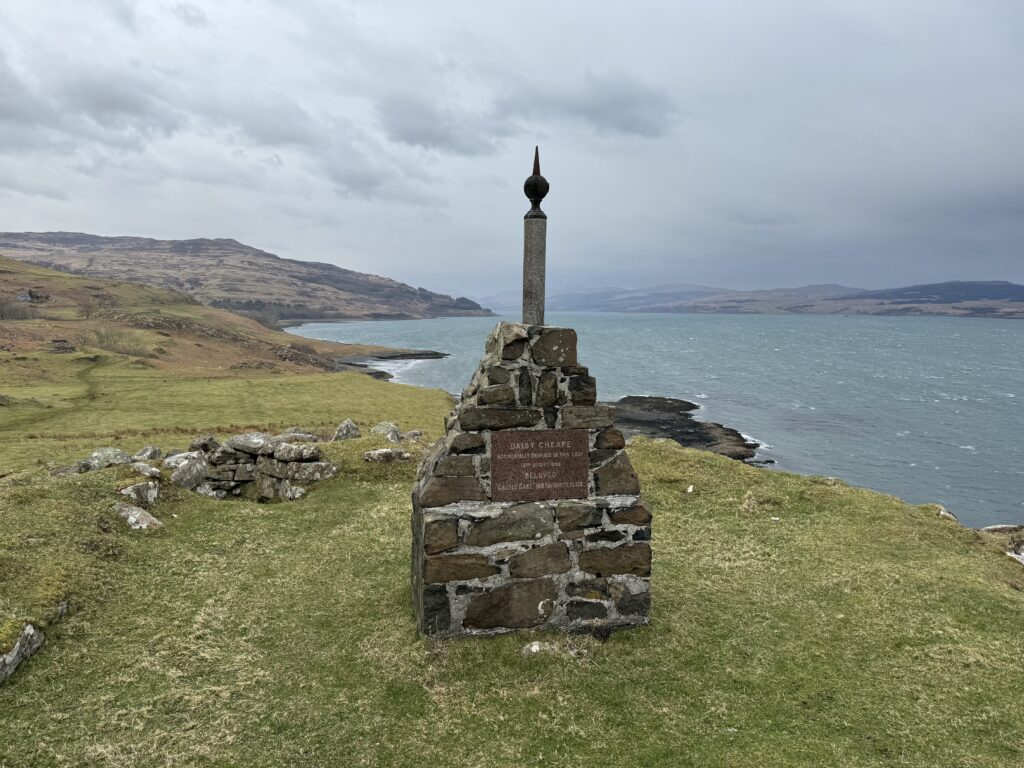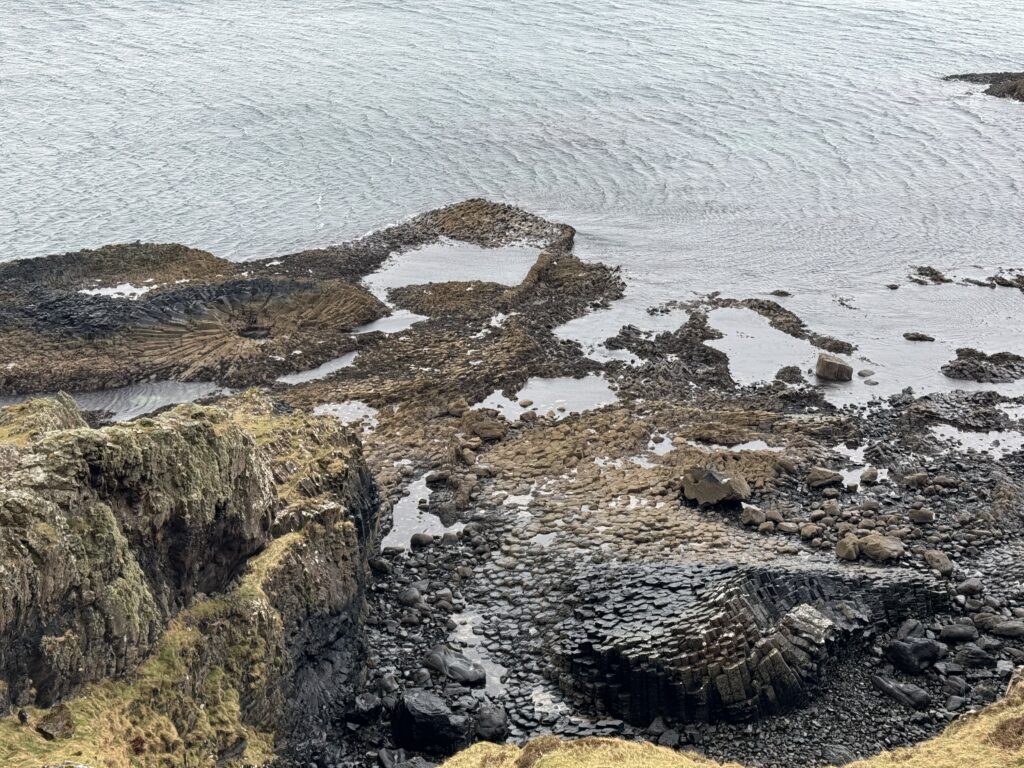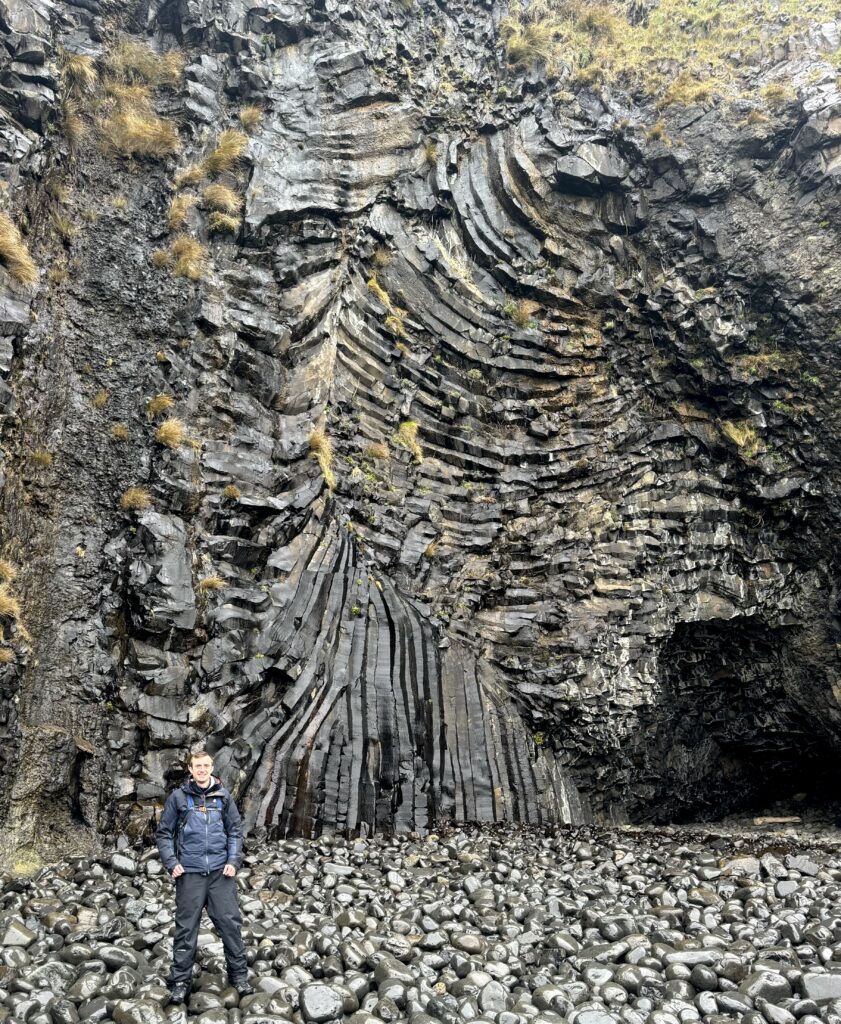Visit the Isle of Mull Fossil Tree
The Adventure Begins Travelling to Mull
Dunollie Castle
Lismore Lighthouse
Duart Castle
Arriving on the Isle of Mull and encountering wildlife

Hen Harrier on Isle of Mull
Hiking on the Ardmeanach Peninsula
The rest of the drive consisted of stunning scenery with the rugged mountainous landscapes on our right and the gorgeous coastline to our left. Arriving to the Tiroran car park after about 45 minutes we could feel the wind starting to pick up as they were to peak at 60mph later in the day. Nevertheless, this was our opportunity and we weren’t going to miss it!
We set away down the Ardmeanach coastline walking towards the Burg. The track is relatively flat before heading downhill to the Western tip of the peninsula making a perfect place to mountain bike if you wanted to fast forward the first 7km! The clouds glided through the sky above us as we marched down the beautiful track. Soon we arrived at the Burg, a 1525 acre estate taken in by the National Trust in 1932 as one of the first properties to come into care. It is part of a “Special Area of Conservation due to its rich plant life“.
As you pass by remnants of old settlements predating the highland clearances, you’ll soon reach the Burg Bothy. This wee stone building was once home to Chrissie MacGillivary, who lived here for 91 years and delighted visitors with her stories over a warm fire and a cup of tea. Its great that the story of this lovely lady lives on.
At this point the track fades out becoming a grassy sheep trail. On the right there is an Iron Age fort at Dun Buirg, with a newer cairn sitting in its center. This cairn serves as a memorial to Helen Margaret ‘Daisy’ Cheape, who tragically drowned in the loch after a boating accident off the coast of Mull in 1896. Her brothers, Ronald and Leslie, tried to save her, but she became entangled in the rigging as the boat sank.

Daisy Cheape Monument
Arriving at Mull's Volcanic Shoreline
Up until this point, the journey had been smooth and uneventful. However, the terrain began to change dramatically. Adrenaline levels rose as the path starts to climb, with a rocky beach far below on the left and steep cliffs towering above on the right. This part of the hike demands full concentration as you navigate along the rugged coast.
It’s hard not to stop and take in the increasingly breathtaking scenery. The volcanic history of Ardmeanach reveals itself along the shoreline with striking hexagonal basalt columns. These formations, created from cooling magma, vary from vertical to horizontal arrangements, and even include a spectacular wheel-like structure. The sight is utterly stunning.

Volcanic Wheel on Ardmeanach Peninsula
On a clear day, you can see the Isle of Staffa in the distance, another of Scotland’s geological wonders created by the same volcanic activity as the Fossil Tree. For more information, keep an eye on our blog for details about our Staffa and Lunga boat trip adventure!
The cliffs above showcase a breathtaking view of the peninsula’s geological history, composed of layer upon layer of ancient lava flows. It’s a rare and clear display of nature’s handiwork. As you continue along the coastal path, a towering waterfall comes into view. The path then suddenly drops off, revealing the only way down—a small, vertigo-inducing ladder. It’s important to only proceed at low tide..
We timed our visit perfectly and relished the adrenaline rush as we safely descended the ladder to reach the beach. As we made our way along the final stretch of the walk, we encountered a curious family of feral goats sheltering in a cave. These goats thrive here thanks to the abundant supply of fresh water running off the cliffs and the large amounts of seaweed that wash up on the shore.

Climbing down to the Fossil Tree
How was MacCulloch's Fossil Tree Created?
Just past the second waterfall, you finally reach the geological marvel known as MacCulloch’s Fossil Tree. This place is absolutely extraordinary. The longer I looked at it, the more amazed I became. If it wasn’t for the tide, I would have stayed here all day. The fossilised tree, approximately 12 metres tall, can be seen to the left of my head in the photo below.
The Isle of Mull Fossil Tree was discovered by John MacCulloch in 1819. His geological map of Scotland, which is displayed at the Geological Society of London, serves as a lasting tribute to his groundbreaking work in British geology. What he found on Mull is incredible. Approximately 50-60 million years ago, the separation of North America from the Eurasian continent led to the opening of the Atlantic Ocean, which triggered extensive volcanic activity. Lava flowed from numerous fissures, including those of Ben More, which at the time was Britain’s largest volcano. This volcanic activity resulted in the preservation of the fossil tree, a remarkable testament to the island’s geological history.
The lava engulfed a forest of conifer trees, leaving the carbonised remains buried within. Over time, the cliff face was exposed to wave erosion during countless storms, revealing this incredible example of a fossilised tree. The fossil is mostly an imprint, but in the bottom few feet, the actual fossilised remains of the tree still survive. Originally, you could find the original charcoal, but due to countless visitors and weathering, very little remains today.
To the right of my head in the photo, you can see the beautiful curved basaltic columns. These were created due to the cooling effect of the tree trunk, which caused the lava to curve around it.

Fossil Tree Isle of Mull
Thanks for Reading!
Thank you for taking the time to read my blog on the Isle of Mull Fossil Tree. I hope you found the journey through this remarkable geological site as fascinating as I did. The island’s rich history, from ancient volcanic activity to its unique natural formations, offers a glimpse into the awe-inspiring processes that shape our world. Your interest and engagement are greatly appreciated, and I look forward to sharing with you our passion to bring to life Scotland’s most incredible locations.
If you want to learn more about the history, the whisky and nature on the Island be sure to tune in for upcoming blogs. Or come and join us on a Scotland tour from Edinburgh to the Isle of Mull. Ranging from our 4 day trip to our ultimate 9 day adventure including Islay, Staffa and more! Until then, happy exploring!